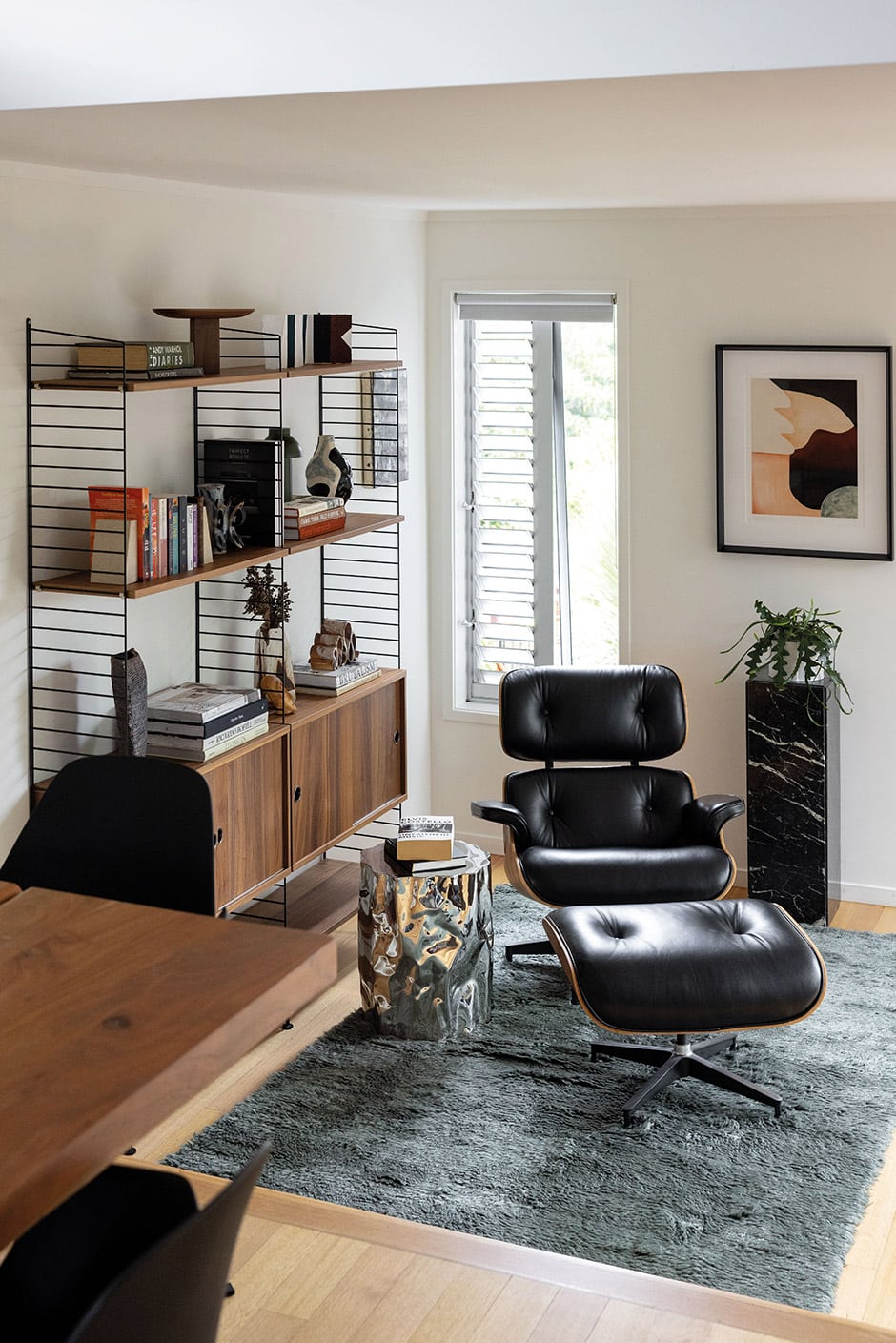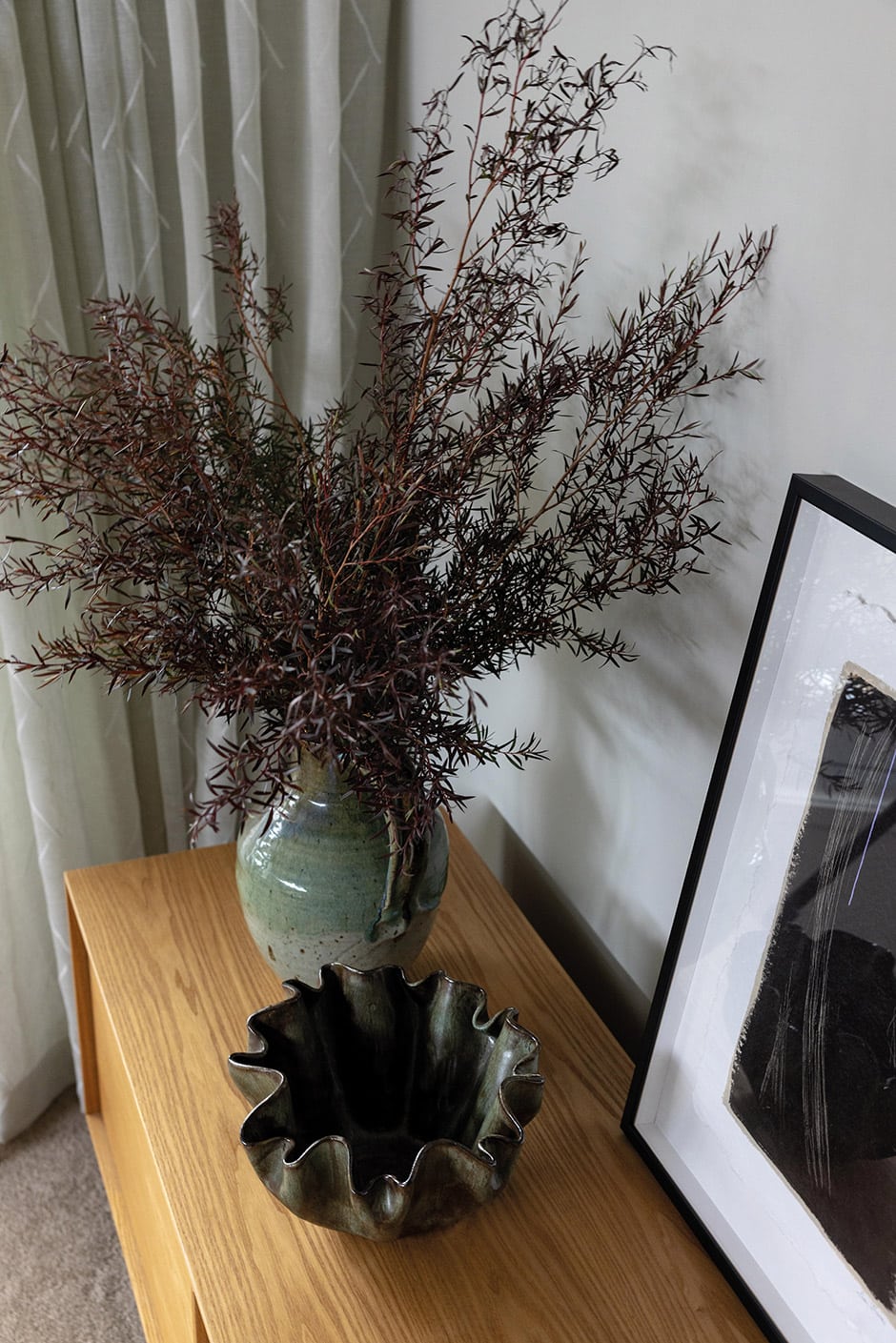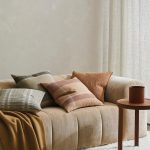Interior stylist Ange Dye’s Tāmaki Makaurau/Auckland practice is called The Untrained Eye, but it’s plain to see she’s more than qualified to make a home look spectacular. Our own peepers were drawn to her recent project, Deep Creek, a property otherwise known as ‘the bach pad’ on the North Shore. Built in the 1960s, it belongs to retired lawyer John Feast, a father of three adult children. Ange was introduced to John by architect Hamish Gunns of Watgunlow, who after making some minor alterations to the two-bedroom house thought John would enjoy working with Ange to style an entryway, a dining space and living spaces both he and his offspring would enjoy.


So Ange, what sort of canvas were you working with here? It was very much a blank one when I was introduced to the project. The house has two levels, but John had previously preferred to spend his downtime in the games/TV room downstairs. I was called in to update the first-floor rooms, and started by painting, and resurfacing the original floors and updating the carpet, then added furniture, art and objects sourced with a view to enticing John back upstairs. I’m happy to say I was successful in that regard!
Deep Creek was unique in that it was the first project on which I aimed to create a narrative rather than simply a beautiful space. It felt more like I was writing a script, then creating a set for it to play out on, and I really enjoyed the experience.
What mood have you used your curated items to set? In one of our initial conversations, John put in a request for “nothing fussy” — and that really stuck with me. The narrative was built around his lifestyle and personality. I’d describe the aesthetic as modernism with a twist of industrial, robust with bursts of sophistication, and there’s definitely a sprinkling of ’60s bachelor pad in the mix as well.

What are some of the stylist’s tricks you’ve employed here? With Deep Creek, it’s all about balance. The floorplan is long, with a living area branching off to the right. Everything’s in view in this space, so in terms of the interior styling, it was important that there was a certain synergy. Although the look is modern, most of the pieces I sourced have a ’60s feel, and muted tones of blue, green, orange and red mixed with timber and metal create a theme throughout.


How do you ensure new and existing items look good together? To successfully combine new and old, you have to find commonalities through colour and form. For example, you might need to regroup a collection or reframe an existing artwork. I ask my clients questions like, “What are the must-haves?” and “What pieces are we keeping?” We’ll often retain family heirlooms. The most important
heirloom in this home is the oil painting that belonged to John’s parents above the buffet in the entryway, beside the dining table. I’m so pleased we kept it, because even though other people may not realise the significance of it, John and his family do.


Can you share any current sources of inspiration for anyone embarking on their own interior update? The first thing that comes to mind is the Netflix series Abstract: The Art Of Design — I especially enjoyed the episode with British interior designer Ilse Crawford. I buy books — a recent purchase is Spaces for Living by Tamsin Johnson — and I recently loved listening to the Business of Home podcast featuring Douglas Friedman. I can imagine myself reclining on the Eames chair in the relaxation zone in this home and listening to podcasts for hours.
the-untrained-eye.co.nz
Words Philippa Prentice
Photography Jono Parker



